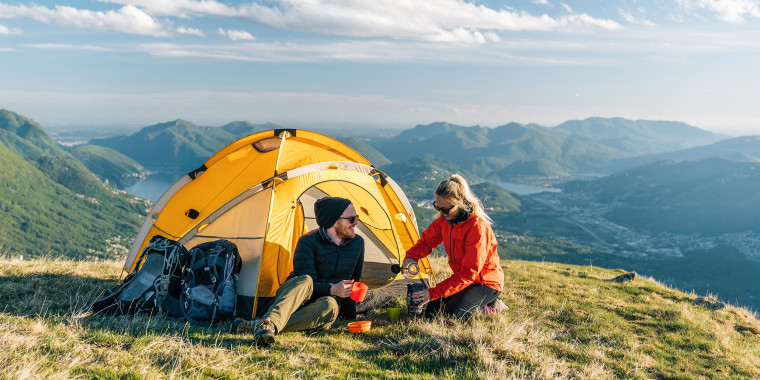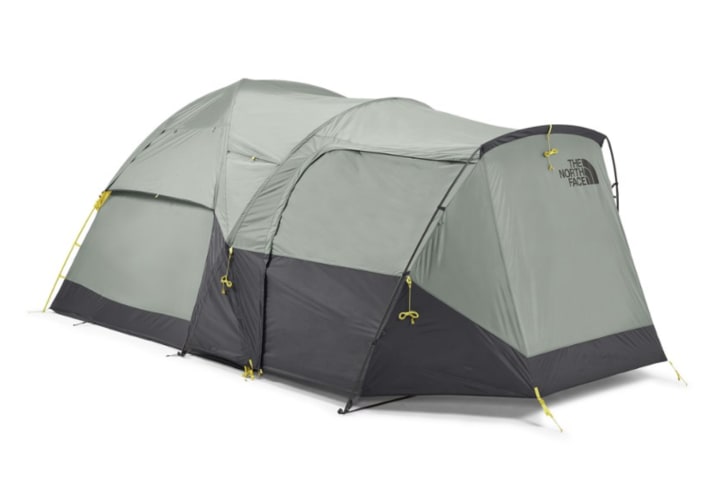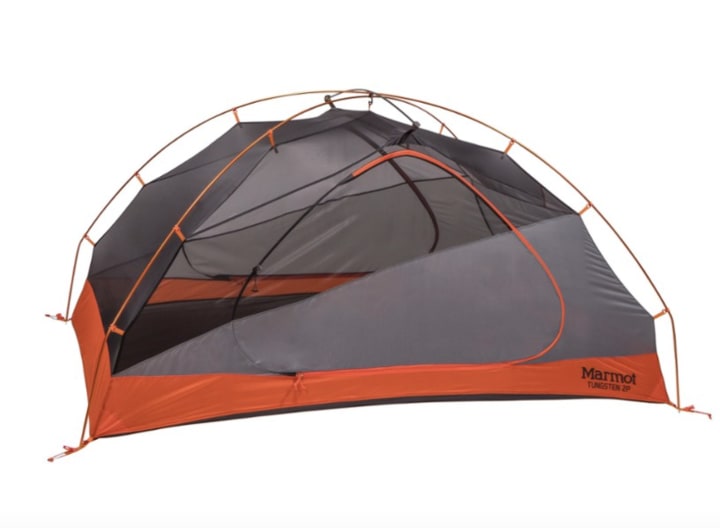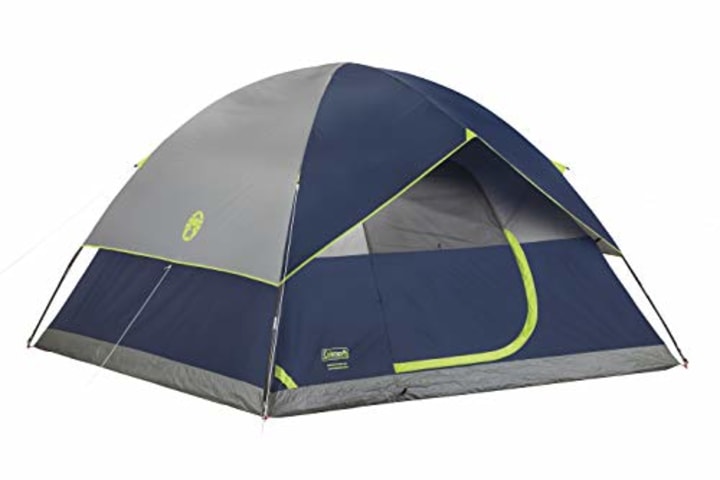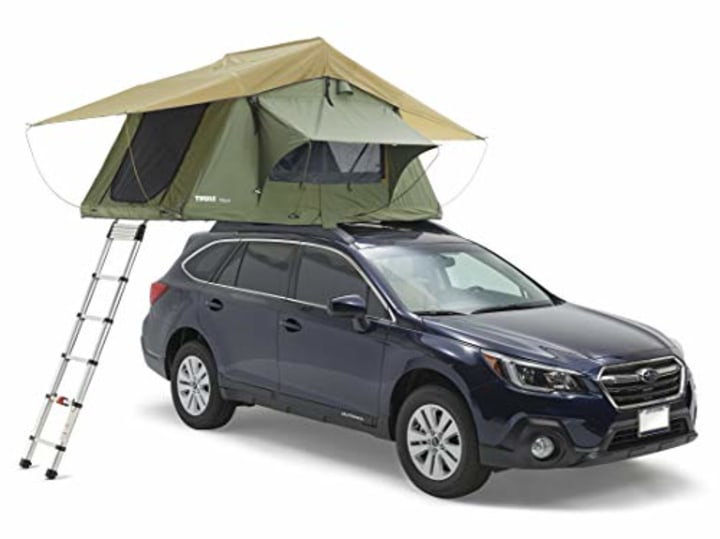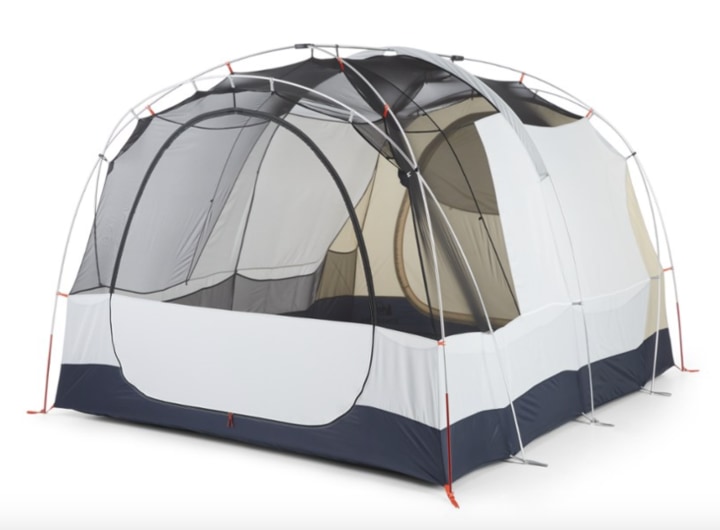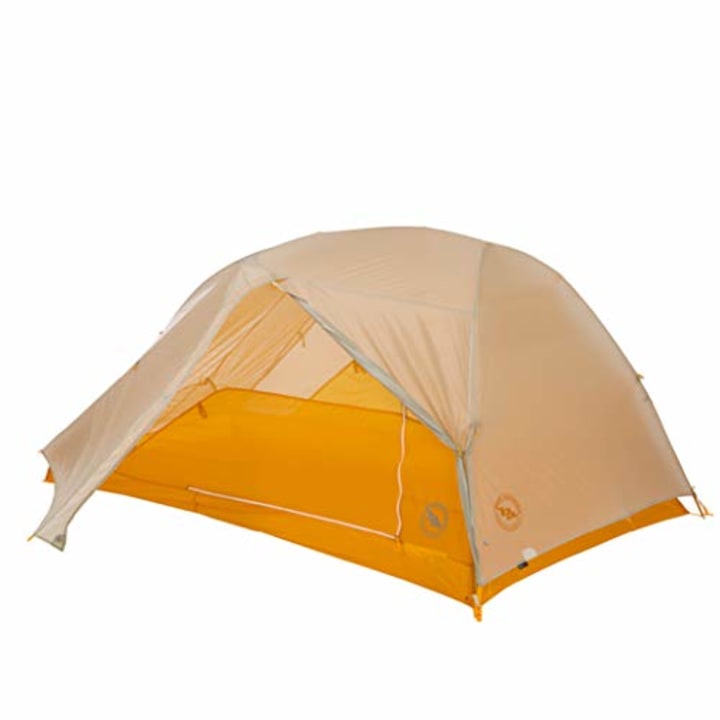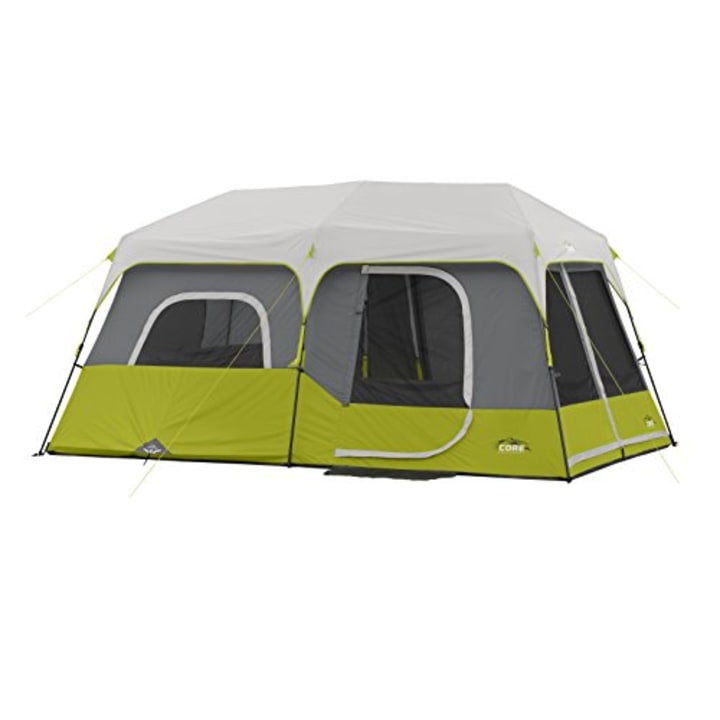While the Centers for Disease Control and Prevention (CDC) still warns against nonessential travel for unvaccinated individuals, a camping trip can be a socially distanced and responsible way to get outdoors for a weekend. Warmer weather sometimes brings with it rainier days, which means sheltering from the elements with the right tent can be crucial for a stress-free trip.
Camping tents can be a hefty investment — with most ranging anywhere from $100 to upwards of $2,500 — and choosing a high-quality tent can help you avoid having to repurchase one every few years. The best camping tent for you depends on your adventuring, as well as the tent’s features, size and fabric.
How to shop for a camping tent
There are a few main features to look for when considering the right tent for your trip, experts told us.
- Durability: With tents constantly exposed to rough conditions, heavy duty materials that can be water- and weather- resistant like canvas, polyester and ripstop nylon are ideal.
- Weight: Tents can make up some of the heaviest camping gear. Keep it as lightweight as you can to reduce the stress on your body as much as possible.
- Space: Whether you’re camping with a friend or your whole family, a livable and spacious tent will allow for extra storage and comfort.
- Luxury: If you’re looking for a more glamorous camping experience, Tessa McCrackin, the chief marketing officer at Campspot, suggested renting a “glamping” tent at a private campground that doesn’t need to be set up.
Best camping tents to consider this year
Whether you’re backpacking in the wilderness or car camping with a group of friends, we’ve compiled some of the best camping tents at various price points to accommodate your specific trip.
The North Face Wawona 6-Person Tent
Measuring 86 square feet, this 6-person tent by The North Face is spacious enough so campers can stand up comfortably while fitting basic furniture like chairs and a small table. Color-coded poles and trims simplify setup and large mesh pockets on the interior increase possible storage. Weighing more than 20 pounds, this tent is definitely on the heavier side, though it does fold neatly into a North Face duffel bag — and setting it up will likely be a multi-person job.
Marmot Tungsten 2-Person Tent with Footprint
This lightweight option by Marmot is a 2-person backpacking tent, complete with an interior mesh wall for a bug-free and well-ventilated enclosure. It comes with a durable polyester rainfly, which is an outermost layer of fabric that protects the tent from rain and condensation, and includes vents for a breathable living space. It also includes a footprint — typically sold separately — that can be placed below the tent to protect the tent floor from abrasive objects like sticks, rocks and roots.
Coleman Sundome 4-Person Tent
The affordable Coleman Sundome Tent is one of the most highly rated options on the market today, boasting a 4.7-star average rating from more than 29,000 reviews on Amazon. Made from Coleman’s original WeatherTec system that includes polyester fabric, anti-wicking thread, webbing and inverted seams, the tent is water- and weather-resistant, and the brand claims that its sturdy frame can withstand winds as strong as 35 mph. The Sundome Tent sizes range from the smallest 2-person option to a large 6-person tent.
Thule Tepui Explorer Kukenam 3-Person Tent
This 3-person rooftop tent is designed to fit on top of most vehicles with a roof rack. It’s a four-season tent, which means its polyester and cotton blend, along with a water-resistant ripstop fabric, is durable enough to withstand winters. It also includes a foam mattress and a ladder. When it’s being transported on top of your vehicle, the tent is folded, but easily pops up during setup. It’s a heavy tent, weighing 131 pounds, so it’s highly recommended that you check the weight limit of your car manufacturer’s roof rack.
REI Co-op Kingdom 6-Person Tent
If head space is a priority, REI’s Kingdom tent line is an option worth considering for family camping trips. The 6-person tent has a peak height reaching 75 inches, providing enough room for most people to comfortably stand in, while its 83-square-foot floor area can fit an air mattress and luggage. It also includes a zippered divider in the center to create two separate rooms for privacy, and has two doors for easy access through the front and the back of the tent. In addition to the 6-person Kingdom tent, REI offers a 4-person option and an 8-person option, which is recommended for larger families.
Big Agnes Tiger Wall UL 2-Person Tent
Weighing 2 pounds, 8 ounces, this backpacking tent by Big Agnes is an ultra-lightweight option for long hiking trips. It’s easy to pitch, with reflective guylines and color-coded webbing for nighttime set-up, and is made from solution-dyed fabric that’ll hold color longer and resist fading from UV rays. It’s a three-season tent, meaning its ripstop nylon/polyester mesh fabric won’t necessarily hold up in winter weather, but it’s still a durable and spacious option for backpacking beginners.
Core 9-Person Instant Cabin Tent
For a glamping trip, this cabin-style tent is made to fit large groups of up to nine people with sleeping bags, according to the brand. If you’re opting for more space and fewer campers, its 14-by-9-inch floor plan can hold two queen air mattresses and several pieces of luggage. It’s 78 inches high, water-resistant and comes in two colors — olive green and wine red. The mesh ceiling also allows for air to ventilate through the tent when the rainfly is off, making it breathable in the hot spring and summer months.
Common types of camping trips
There are a lot of different shapes, sizes and styles of tents on the market today. Thankfully, there are three main types of camping trips that can help you narrow down your options this season: backpacking,car camping and family camping.
A backpacking tent is typically a dome-shaped tent that’s lightweight and durable enough to stand up to the elements, a plus for anyone planning to backpack in the backcountry. Linda Romero, director of travel blog Bearfoot Theory, often embarks on multi-day camping trips and said this is her most used type of tent, noting they’re “really durable.” They’re also pricey, she said: Most quality backpacking tents tend to run close to “the $500 range.”
Car camping, on the other hand, involves driving up to a campsite and parking your car there — so tent weight and durability can be a lower priority. Romero suggested getting a spacious tent that’ll allow for movement and storage of an air mattress, a small table and luggage. Given affordable prices, she recommended investing in a bigger tent than the number of people camping — a two-person tent is going to be “like a sleeping pad without much additional space,” so getting a four-person tent will be “more comfortable, even if it's just for two.”
If you’re constantly on the move and aren’t keen on pitching and taking down a tent, rooftop tents secure to the roof of your car and either pop up or fold out when you’re ready to use them. This convenience and additional features — including a ladder and a built-in mattress — mean rooftop tents tend to be on the higher end of the price spectrum.
If you’re planning on family camping, especially with kids and pets, you’ll likely want to invest in a spacious, comfortable and durable tent. This type of camping usually overlaps with car camping, and a lot of the same priorities apply. However, camping with a family likely means you’ll need a lot more space inside the tent for standing and storing items, including multiple air mattresses and room dividers for privacy.
Regardless of the type of tent you choose, Campspot’s Tessa McCrackin noted the importance of practicing setting up your tent at home before heading out, especially if you may have to pitch it in bad weather. “And whatever you do, put the tent up right when you get there — don’t wait until later, because setting up a tent in the dark after a few beers isn’t easy,” she suggested. To make sure your tent lasts for years, Romero recommended always shaking out the tent before packing it back up, never placing it near a cooking area and keeping all the parts together, including poles and stakes.
Catch up on Select's in-depth coverage of personal finance, tech and tools, wellness and more, and follow us on Facebook, Instagram and Twitter to stay up to date.
